 |
 |
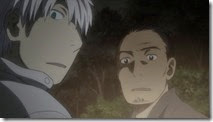 |
Once again, Mushishi serves as a wonderful travelogue for Japan.
In case you were wondering, the beautiful setting for this chapter of Mushishi is Yanagawa, in Fukuoka Prefecture, on Kyushu Island in Southern Japan. I’ve never been to Fukuoka as it’s quite far South, but it’s yet another on the list of interesting locations in this country that I’d love to see for myself. With its canals overhung with willows and small wooden boats (Studio Ghibli made a film about them called “The Story of Yanagawa’s Canals” way back in 1987) Yanagawa seems very much a dreamlike place floating in time – which makes it a perfect setting for “The Hidden Cove”.
Once again we have a very simple story here, with Ginko acting more as observer and facilitator than participant (though perhaps not to the extent the latter was true in the last couple of episodes). While being rowed through the village he sees a girl staring off into space inside one of the houses, and immediately senses that something isn’t right. He asks the girl’s father if she has a “bad habit” – that she loses her senses and disappears into herself for long stretches of time.
As it turns out, the girl, Yura (Koshikawa Shiori) is sickly – she’s suffered from a heart condition for her entire life. Her only consolation was Sumi (industry legend Shimamoto Sumi) a young woman (Shimamoto-san is in fact 60, though you’d never guess it here) hired by Yura’s father (Arikawa Makoto) after his wife’s death to help care for his daughter. The two develop a connection so close that Yura can communicate with Sumi without even being in her presence – and eventually the father sends Sumi away in fear that his daughter is becoming too dependent on her. That doesn’t stop Yura from “talking” to Sumi though, especially when she has a heart episode – and it’s only when Ginko arrives and explains that this is the doing of a mushi called Kairogi (Flow) that the true peril of these mental journeys becomes clear.
Perhaps more even than most Mushishi episodes, “The Hidden Cove” is dreamlike. It certainly doesn’t hurt that the setting is so fantastical that even Ghibli was entranced, or that Artland and Nagahama-sensei are able to show us mist in a way we’ve never seen it used before. But the entire story exists on the border between consciousness and dreams – Ginko himself says that these connections between two people can be possible even without the help of Kairogi, if they’re thinking of each other at the same time (as romantic a notion as Mushishi has embraced, really).
In human terms, this isn’t among the most compelling chapters (though next week’s “Thread of Light” is). While Yura’s situation is wrenching, she herself isn’t especially likeable and it was the father’s bad decision that started the problem – and of course the simple solution Ginko proposes at the end is one that could have been utilized at any time. But it works better as a mood piece, a combination of the atmospherics and the contemplative nature of the story. Once again Mushishi takes on something almost everyone has felt on an elemental level and been unable to explain – which, at heart, is at much as anything what Mushishi is all about.
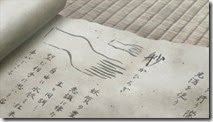 |
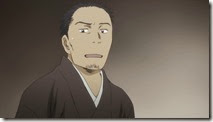 |
 |
 |
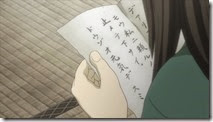 |
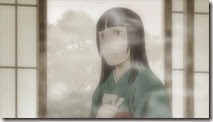 |
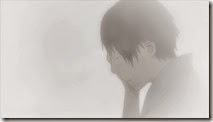 |
 |
 |
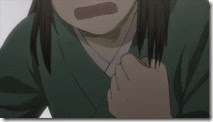 |
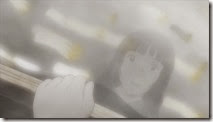 |
 |
 |
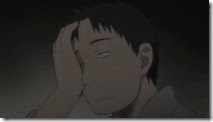 |
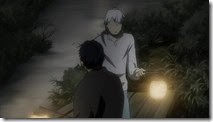 |
 |
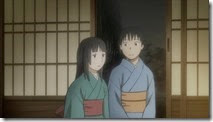 |
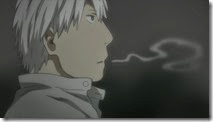 |
 |
 |
 |
End Card:
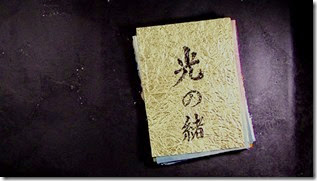 |


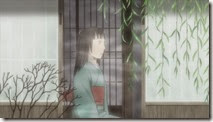
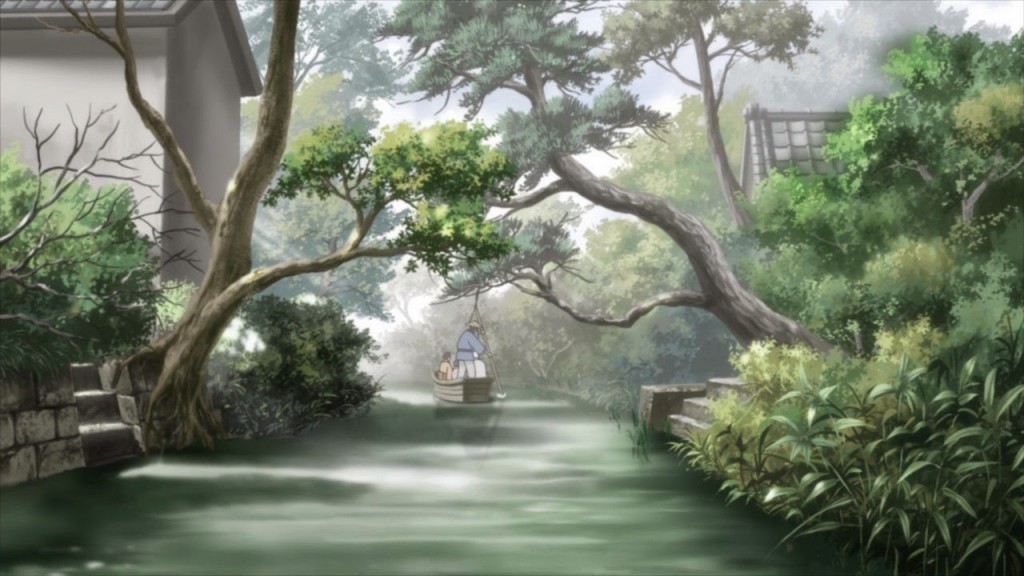
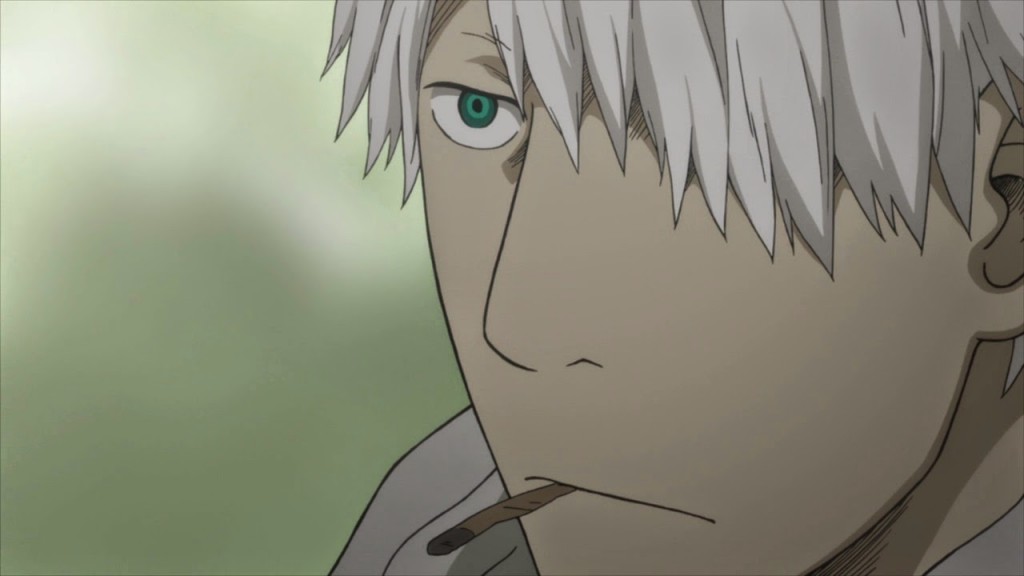

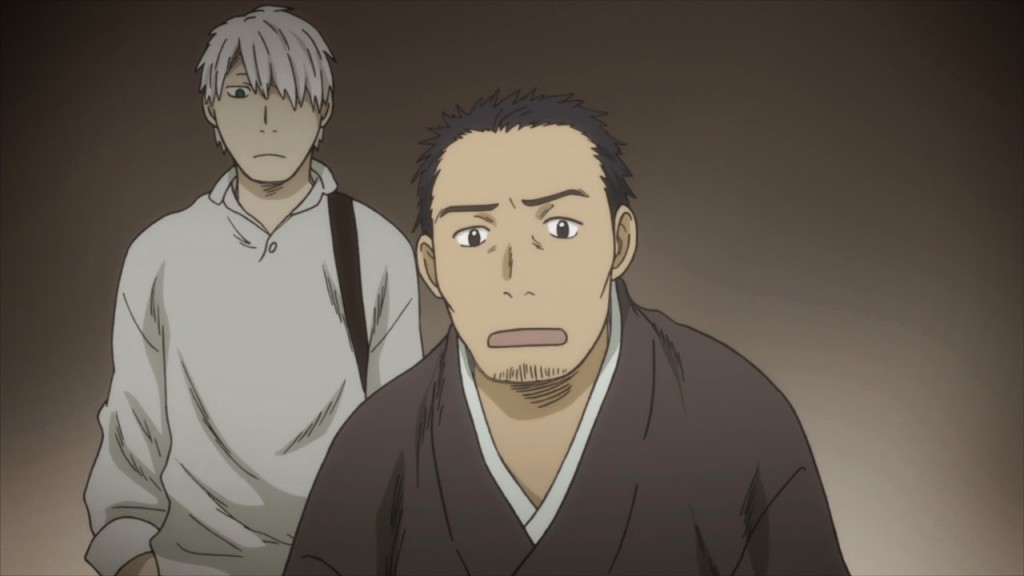
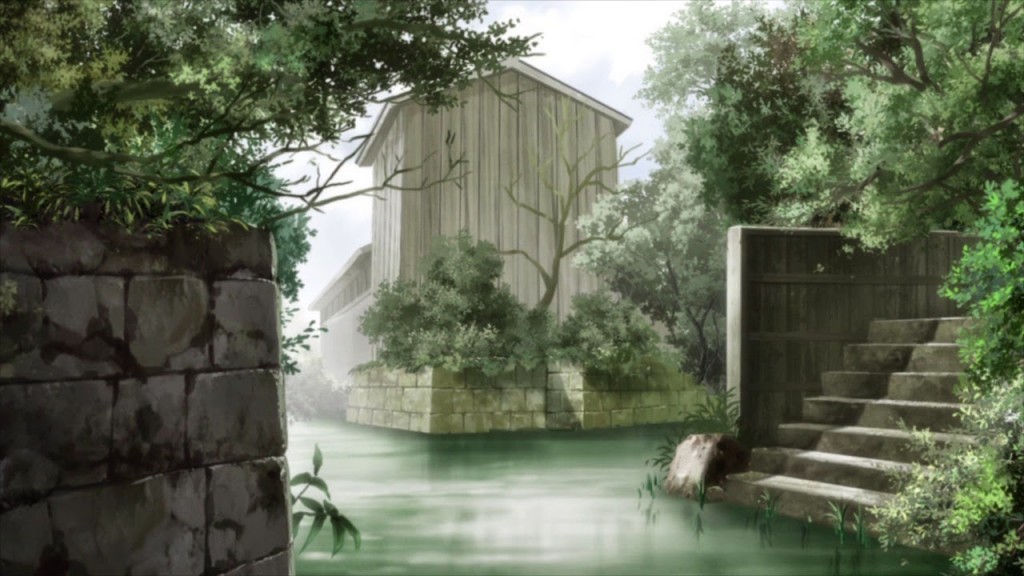


vincee87
November 9, 2014 at 5:41 pmWell this episode came at a good time. I am just in the middle of planning a trip to Kyushu at the end of the year. Thanks Enzo for sharing about Yanagawa. I had no idea the setting is a based on a real place.
Aeolus
November 10, 2014 at 12:51 amAt first I was going to say I felt this episode was rather weak, probably a function of the past two episodes being exceptional. Then I realized there was some strong commentary on modern communication here. Let's face it, face to face communication is slowly disappearing. Increasingly, we find ourselves cut off from those right around us (like Yura), even as we communicate with others farther than previously thought possible. This episode seems to say "What happened to the days when we'd call to say we were coming over, now we mindlessly stare out windows (or at Windows) as we chat/Skype/etc?"
admin
November 10, 2014 at 12:53 amIt's an interesting thought, but you have to remember that the story was written over a decade ago when the phenomenon you describe wasn't quite so widespread. I'm not sure that was the author's intention.
Aeolus
November 11, 2014 at 8:53 amThe phenomenon may not have been as prominent, but it was definitely there. Indeed, one could argue it's been there for a very long time (http://xkcd.com/1227/). Of course, a decade's worth of foresight is also hardly an impossible feat (e.g., Aldus Huxley, George Orwell, Arthur C. Clarke, Jules Verne, and Robert Heinlein all come to mind).